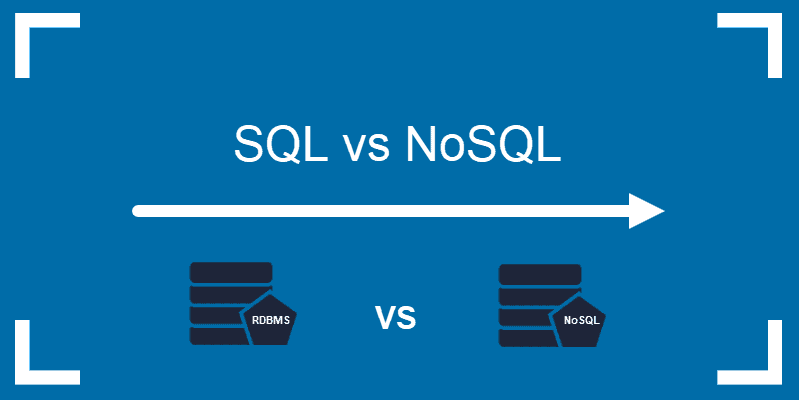Are you looking to choose the perfect database management system (DBMS) for your next project?
Look no further! In this article, we’ll dive deep into the world of SQL and NoSQL databases, comparing their features, strengths, and weaknesses, along with practical examples.
So, strap yourself in, and let’s get started!
Table of Contents
- SQL Databases: The Power of Structure
- NoSQL Databases: Flexibility Unleashed
- SQL vs. NoSQL: Which One to Choose?
- Final Thougths
SQL Databases: The Power of Structure
SQL (Structured Query Language) databases have been around since the 1970s and are the most widely used type of databases today.
They follow the relational model, where data is stored in tables with predefined schema and relationships between them.
ACID Compliance
SQL databases are ACID (Atomicity, Consistency, Isolation, Durability) compliant, which ensures that transactions are reliable, and the data remains consistent, even in cases of hardware failures or crashes.
This is especially important for applications dealing with sensitive data, such as banking and e-commerce.
Schema-based Structure
Having a predefined schema means that each table has a well-defined structure, with specified data types and constraints. This makes it easier to maintain data consistency and enforce data integrity rules.
Example: A simple SQL schema for a blog could look like this:
CREATE TABLE users (
id INT PRIMARY KEY,
username VARCHAR(50) NOT NULL,
email VARCHAR(50) UNIQUE NOT NULL
);
CREATE TABLE posts (
id INT PRIMARY KEY,
title VARCHAR(100) NOT NULL,
content TEXT NOT NULL,
user_id INT,
FOREIGN KEY (user_id) REFERENCES users(id)
);
Complex Queries
SQL databases excel in handling complex queries and joining multiple tables, allowing you to extract data from different sources and create detailed reports.
NoSQL Databases: Flexibility Unleashed
NoSQL (Not Only SQL) databases emerged in the late 2000s as a response to the increasing need for scalability and flexibility.
They’re non-relational and can handle unstructured data, making them ideal for handling large volumes of diverse data.
Schema-less Structure
NoSQL databases do not require a predefined schema, allowing you to store data in various formats, such as key-value, document, column-family, or graph. This makes them perfect for applications with evolving data requirements, as you can easily modify the data structure without altering the entire database.
Example: A simple document in a MongoDB (NoSQL) database for a blog could look like this:
{
"username": "johndoe",
"email": "johndoe@example.com",
"posts": [
{
"title": "My first blog post",
"content": "This is the content of my first blog post."
},
{
"title": "My second blog post",
"content": "This is the content of my second blog post."
}
]
}
Horizontal Scalability
NoSQL databases are designed to scale horizontally, distributing data across multiple servers.
This makes them a great choice for applications with high write and read loads, as well as those dealing with big data or real-time analytics.
High Availability
Many NoSQL databases have built-in mechanisms for data replication and automatic failover, ensuring high availability and fault tolerance.
This is crucial for applications that need to maintain uptime even in case of server failures.
SQL vs. NoSQL: Which One to Choose?
Now that we’ve covered the basics, let’s see how these two types of databases stack up against each other in different use cases:
- Data Consistency and Integrity: If your application requires strict data consistency and integrity, an SQL database is the better choice. Its schema-based structure, ACID compliance, and support for complex queries make it ideal for applications dealing with sensitive data or requiring complex reporting.
- Flexibility and Scalability: NoSQL databases shine when it comes to flexibility and scalability. Their schema-less structure allows for easy modifications, while their horizontal scalability ensures they can handle large amounts of data and high read/write loads. If your application needs to evolve over time or deal with diverse and rapidly changing data, a NoSQL database may be a better fit.
- Development Speed: NoSQL databases typically offer faster development, as they don’t require a predefined schema and allow for more flexibility in data modeling. This can be advantageous for projects with tight deadlines or applications that need to quickly adapt to changing requirements.
- Learning Curve: SQL databases have been around for a long time, and the SQL language is widely taught and understood. As a result, there’s an abundance of resources and talent available for SQL databases. NoSQL databases, on the other hand, may have a steeper learning curve, especially if you’re unfamiliar with the specific database technology.
- Use Cases: Some specific use cases may favor one type of database over the other. For example, SQL databases are great for applications that require complex joins and transactions, such as ERP or CRM systems. NoSQL databases are a better fit for applications dealing with large amounts of unstructured data, such as social networks, IoT systems, or real-time analytics platforms.
Final Thougths
In the end, the choice between SQL and NoSQL databases depends on your application’s specific needs and requirements.
Consider factors such as data consistency, scalability, development speed, and use cases before making a decision.
And remember, there’s no one-size-fits-all answer – the best database for your project is the one that best meets your unique needs.
Happy database hunting!
Thank you for reading our blog, we hope you found the information provided helpful and informative. We invite you to follow and share this blog with your colleagues and friends if you found it useful.
Share your thoughts and ideas in the comments below. To get in touch with us, please send an email to dataspaceconsulting@gmail.com or contactus@dataspacein.com.
You can also visit our website – DataspaceAI




